ASUS MeMO Pad HD7 Review: $149 Nexus 7.1 Successor & Our First Look at MediaTek's MT8125
by Anand Lal Shimpi on July 29, 2013 3:55 PM EST- Posted in
- Tablets
- Asus
- Mobile
- Android 4.2
- MeMO Pad
The GPU: PowerVR SGX 544MP1
Although the MT8125's quad-core Cortex A7 configuration isn't too unusual, its GPU is. MediaTek integrated a single PowerVR SGX 544MP1 into the MT8125. The MP1 suffix isn't redundant as the MP version of the part includes a last level cache.
The 544MP1 is clocked at 286MHz in the HD7 implementation of the MT8125, yielding peak FP performance of just under 9 GFLOPS. That's nearly 2x the peak FP performance of the Tegra 3 GPU in the Nexus 7, although there's much more to performance than just raw FP throughput.
In practice the MT8125's GPU implementation tends to trail the Tegra 3 based Nexus 7. GFXBench 2.7 shows a 12% reduction in fill rate and less than 1/4 the triangle rate of Tegra 3. The Egypt HD test narrows the gap considerably, but T-Rex HD shows a 32% performance advantage for the Nexus 7 (admittedly at unplayable frame rates from both chips).
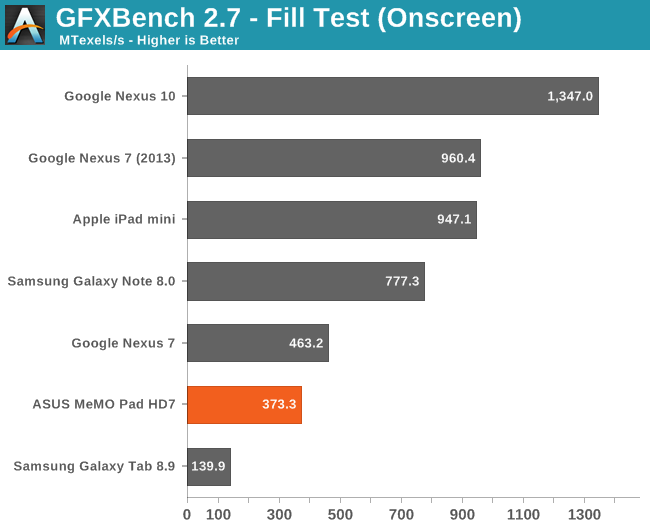
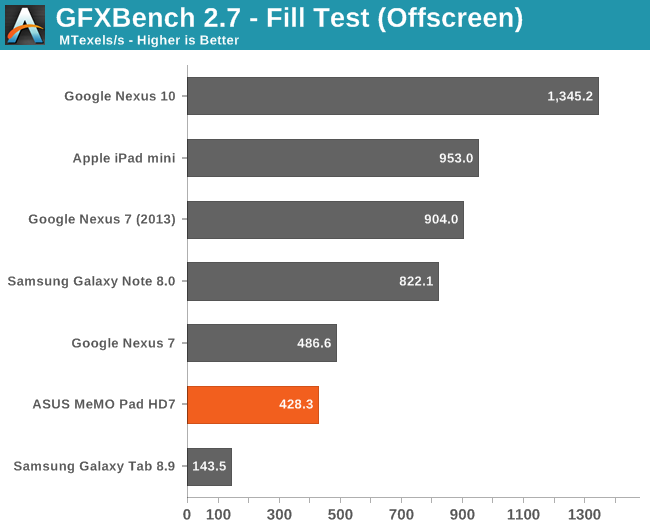
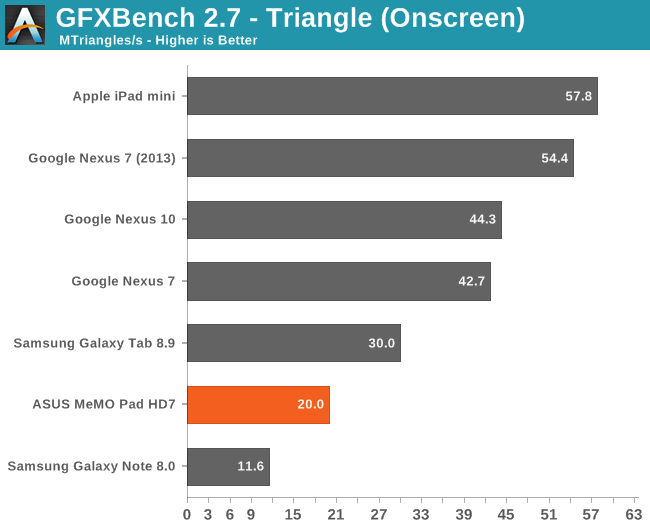
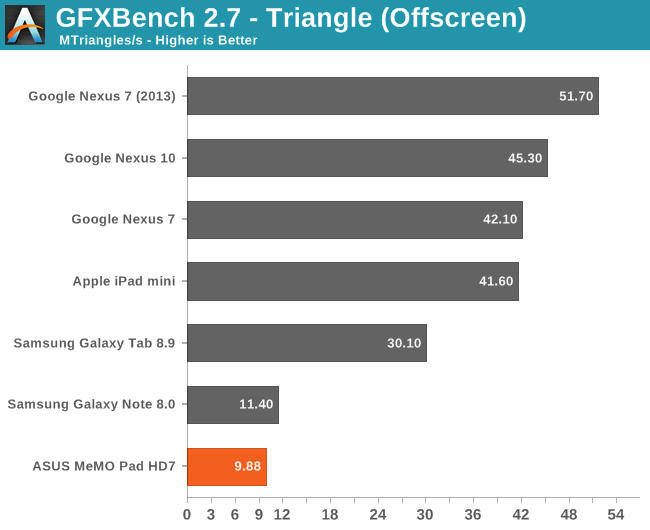
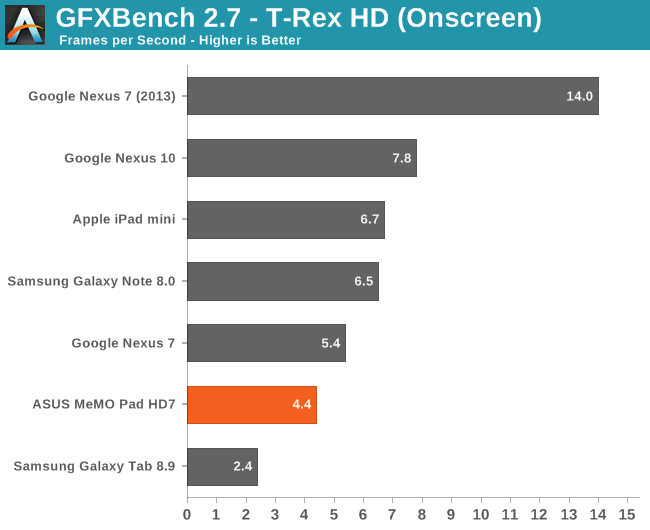

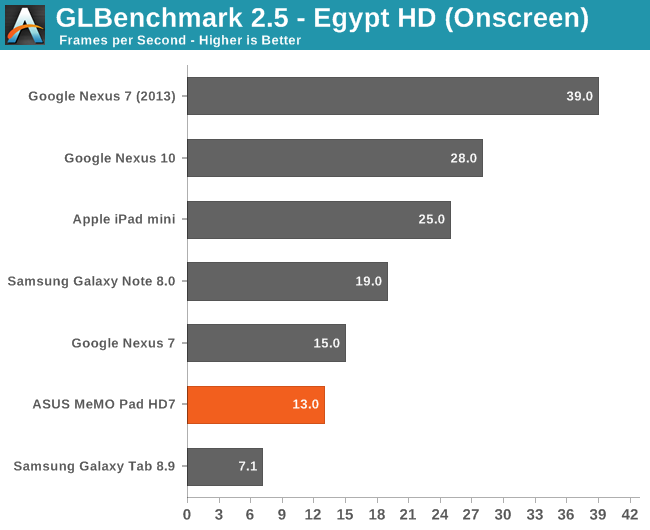
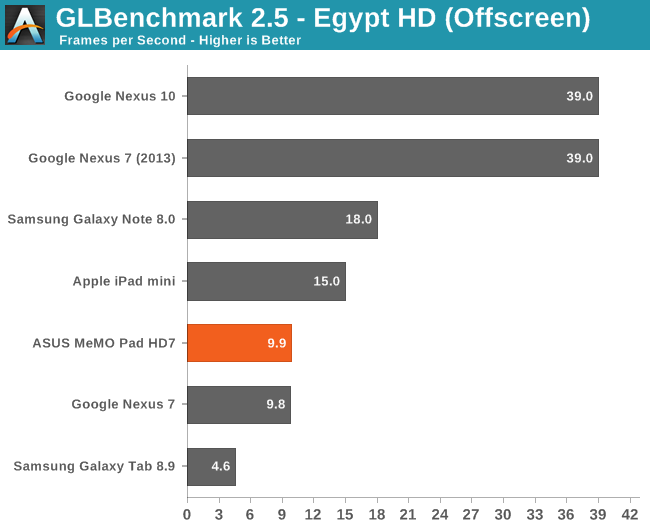
3DMark for Android has the Tegra 3 based Nexus 7 ahead by around 12%, while BaseMark X grows that margin to over 40%.
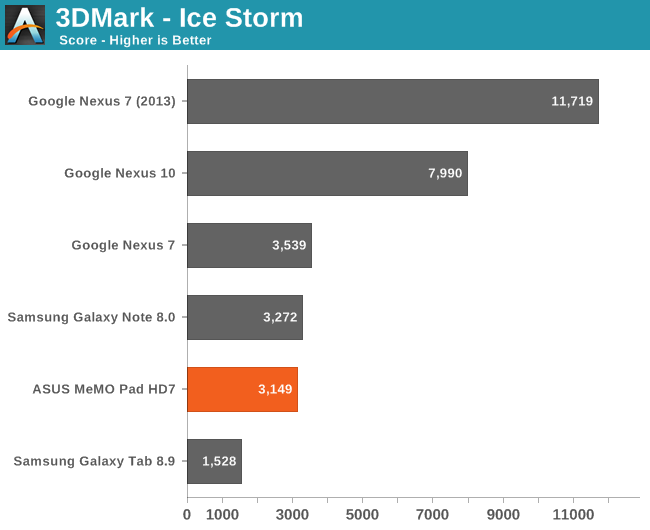
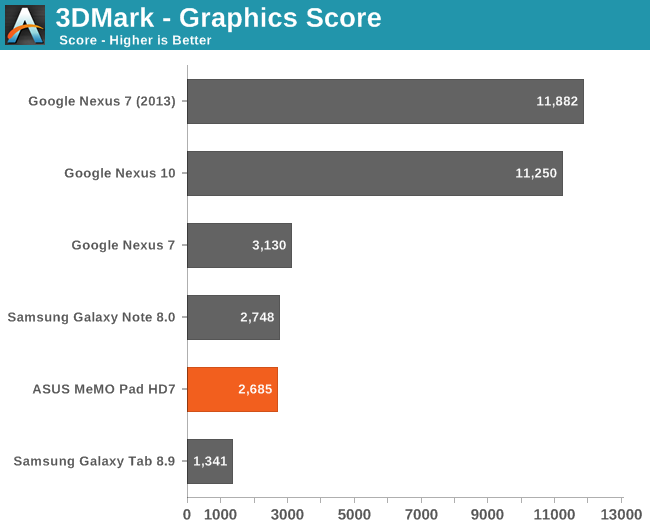
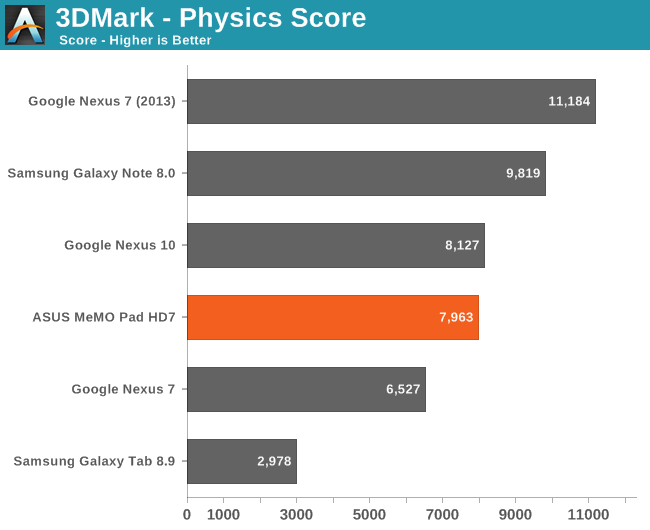
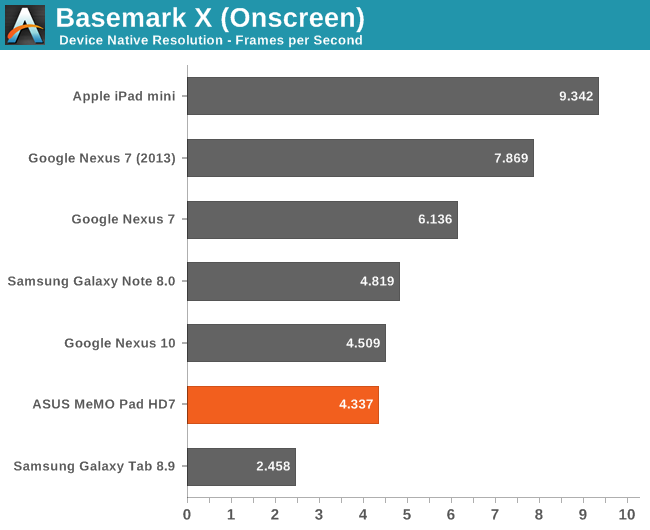
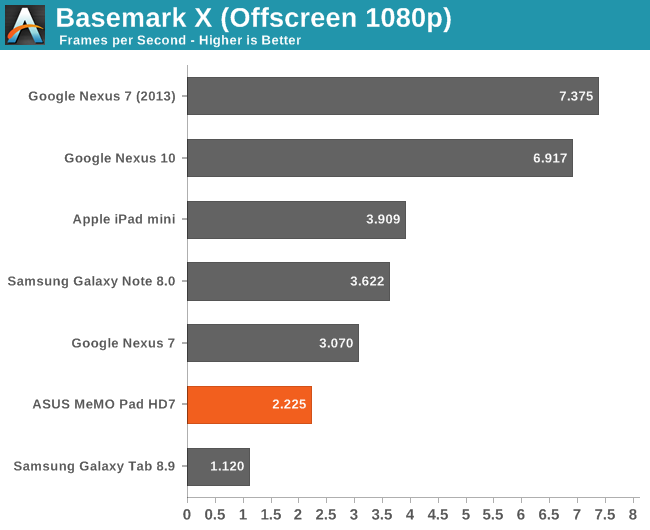
The 3DMark breakdown is quite possibly the most interesting because it actually has the MT8125 pulling ahead in the CPU bound physics test. The GPU-specific test however has the Tegra 3 ahead by 14%.
In terms of real world gaming performance, the MT8125 is honestly fine. I gave Shadowgun and Modern Combat 4 a try, both of which were definitely playable. That's always the big thing to keep in mind with the current crop of game simulation tests under Android: they're mostly designed to stress high end silicon. Game developers on the other hand have to target what the majority of the market has. If we look at stats from Unity around 90% of all platforms are Mali-400, Adreno 2xx, PowerVR SGX 531/540, Tegra 2/3 generation. In other words, at least for the near future the MT8125's GPU performance should be ok.











75 Comments
View All Comments
Qwertilot - Tuesday, July 30, 2013 - link
A bit scary really this. Judged objectively, this thing is a big percentage - 80? - per cent of an ideal small tablet and the new Nexus 7 is a bigger one. Huge improvements would need battery breakthroughs. Yet they're both down at very low prices.Budget PCs really do seem to have an awful lot further to come.
HighTech4US - Tuesday, July 30, 2013 - link
Anand why on the "ASUS 7-inch Tablet Specification Comparison" chart (or anywhere in the review) are the different sensors each tablet has (or doesn't have) not mentioned?Because of the lack of complete specifications I have to dig deeper on other sites to get a complete picture of what each Tablet offers. That really shouldn't happen.
-----
Again a lack of sensors, especially GPS really make these lower cost tablets not very useful.
No GPS means NO Google Maps.
Arbie - Tuesday, July 30, 2013 - link
It's great that this Asus tablet has micro-SD. I won't even consider a tablet that doesn't. It is hugely quicker to swap media sets in and out using SD than any other way. For my uses, the size of internal memory is much less important.Regarding SD formatting, here's a utility that let me put a 64GB card in an circa 2009 media player. Get it at: http://www.ridgecrop.demon.co.uk/index.htm?fat32fo...
Arbie - Tuesday, July 30, 2013 - link
Also, Anand, the presence or lack of micro-SD should appear in the "Basic Tablet Specification Comparison" table. This is really important to people, even if Google and Amazon downplay it for their own marketing reasons. Just look at the number of comments on this topic.Wwhat - Tuesday, July 30, 2013 - link
I don't think the absence of SD-card slots on google's devices has anything to do with cost whatsoever, SD-card slots are easy and cheap and available on the lowest of budget devices,It's more an attempt to force people to do everything through (google-)cloud storage I think, as the article states
And yes it's stupid and I'd even say nasty since it would cost them next to nothing to add it.
'don't be evil'? I think there is a reason they abandoned that mantra.
The question now is: What can we the consumers do about it? Are there attachment you can connect to the nexus to add a SD slot without the thing getting too ridiculously messy? Anybody know?
user777 - Thursday, August 1, 2013 - link
I have Nexus 7 2012 and there is no problem to use USB OTG cable + USB stick (or Transcend USB stick with microSD+SD card slot). I use Total Commander+USB Stick plugin (free). It is possible to open any doc/pdf/jpeg/avi/mp4 file.It is possible to share any folder or external HDD at your laptop and to use like WiFi Network LAN storage using ES File Explorer. It is possible to play any movie using streaming (without downloading) from the Network LAN storage (MX Player or BS Player). It is even possible playing movie from WiFi FTP server.
n13L5 - Wednesday, July 31, 2013 - link
Quoting the Article: "Google was pretty adamant against including a microSD slot in the original Nexus 7 (preferring a combination of internal and cloud storage), but ASUS put one back in the design of the MeMO Pad HD7."Good Asus, bad Google, stop being evil, k? Stupid cloud not always accessible.
evolucion8 - Wednesday, July 31, 2013 - link
Hi, I have a question, which CPU monitoring software did you use to monitor the CPU usage during videoplayback? Looks sleek and lean!user777 - Wednesday, July 31, 2013 - link
Smal mistake at the ASUS 7-inch Tablet Specification Comparison:ASUS Nexus 7 (2012) has 1.2MP front-facing camera
user777 - Wednesday, July 31, 2013 - link
Just got the official Android 4.3 upgrade on my Nexus 7 2012.Would be glad to see the performance of the new Android version 4.3 at the storage random write tests for the old Nexus 7 and new Memo Pad HD 7.